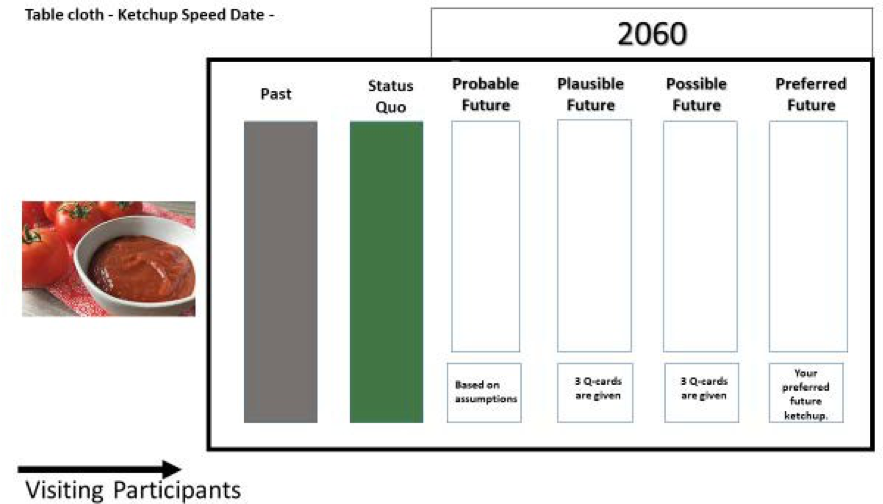Accepted abstract - Creative Tastebuds Symposium 2021
Broaden your taste for the future
Innovation showcase
By Linda Hofman and Danielle Naafs, Fontys Academy for Creative Industries, Trend research and concept creation in Lifestyle, Tilburg, The Netherlands.
Century eggs, Roquefort cheese, Dutch herring, kimchi, Brussels sprouts and all other kinds of products we would never eat if we only trusted our taste. These products have very complex flavours that humans had to learn to appreciate. Due to high industrialization and globalization we mainly got used to eating food that is easy to like: sweet, fat and salty. The food industry discovered this taste triangle is the cheapest and the most preferred, but also the unhealthiest and without any need of the eater to be ‘taste-skilled’. Only those food products, which are the easiest to grow in high volume and the easiest to handle in the food production, will end up on our plate. So industrial producers try to make simple tasting into all sorts of mass food products from meat to vegetables. This mass production food system is devastating for biodiversity. Would we be able to change the food system from a mono-industrial food system to poly-post-industrial food systems? What if our taste leads us to a quest of (bio)diversity? We humans are less capable of enjoying different flavours of food. What if we start enjoying complex flavours again? What assumptions do we have to get rid of?
Future food designers Linda Hofman and Danielle Naafs are creating future consciousness among their students, companies and other stakeholders in order to develop concepts for sustainable food systems. During an interactive ketchup speed dating we will trigger the visiting participants to expand their future consciousness on food. We will use different future perspectives: probable, plausible, possible and preferable future (Voros, 2017). This will be done for tomato ketchup, because it is a worldwide used product with a recognizable taste.
Description of the innovation showcase
We invite visiting participants to play the speed dating game for about 7-10 minutes, in which they explore future innovation for a particular product (see Figure 1). For each ‘time frame’ we ask a few questions and each participant has to write down the answers on cards and place them on the table. In the Probable future we will interview them about their current tastes and ideas regarding tomato ketchup. For the Plausible future, we will ask how they think ketchup would look like taking current trend developments into account (these are shown on the cards). In the case of the Possible future, we go a step further into the future and ask ‘what if questions’, which entails developments that are not possible yet. Finally, we ask the visiting participants to formulate their own future preferred ketchup based on the previous views of their futures.
Output
Participants are triggered to think differently about the value and future of ketchup. They will probe, challenge and expand their prospective thinking and learn to know more about their current assumptions, usage and tastes of this product. The overall output is that the variety of disciplines and assumptions gives us a very varied picture of the future of food in general and ketchup in particular. These insights can be taken into account for sustainable future taste innovations. At the end we will present the most preferred future-proof ketchup.
Figure 1:

References
Voros, J 2017, Big History and anticipation: Using Big History as a framework for global foresight, in R Poli (ed.) Handbook of anticipation: Theoretical and applied aspects of the use of future in decision making, Springer International, Cham. doi:10.1007/978-3-319-31737-3_95-1.